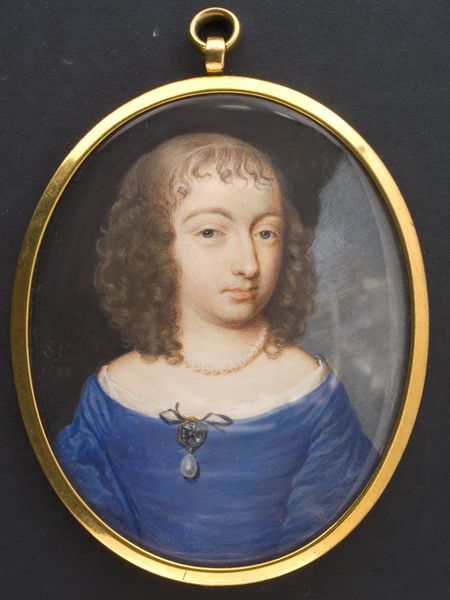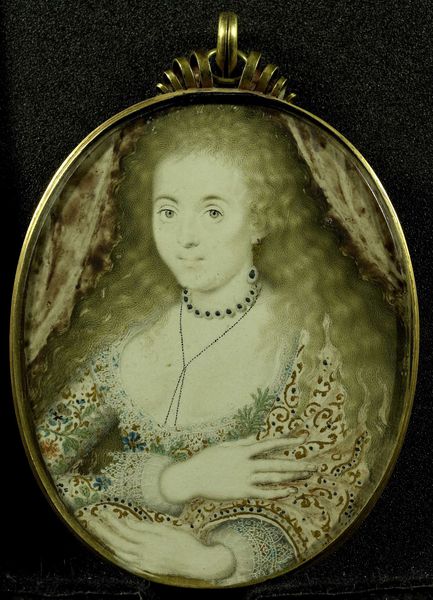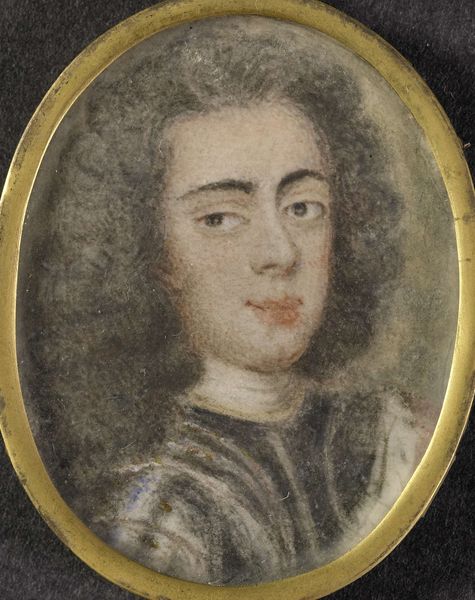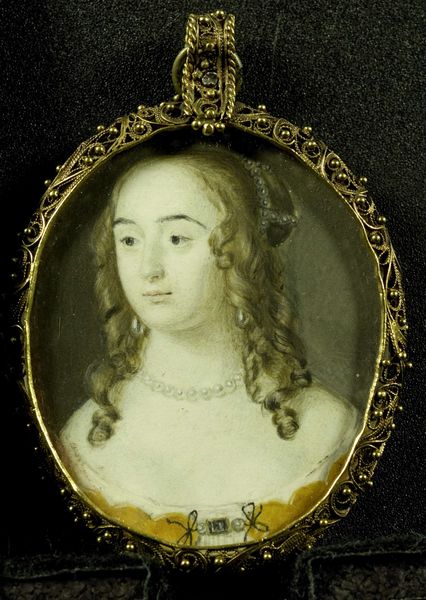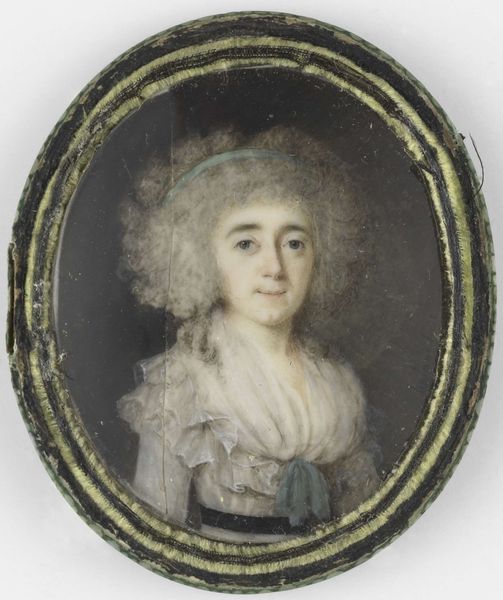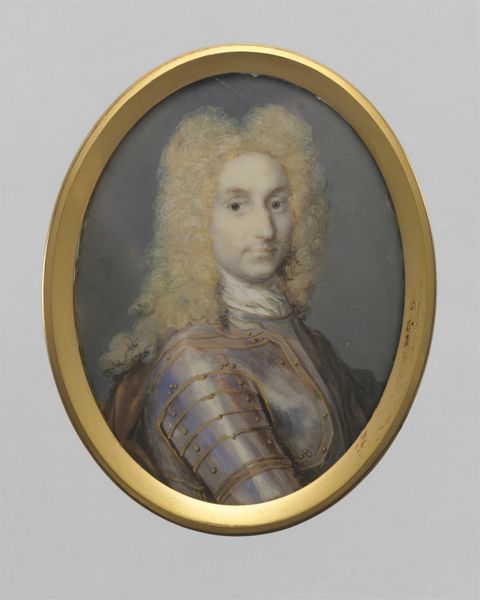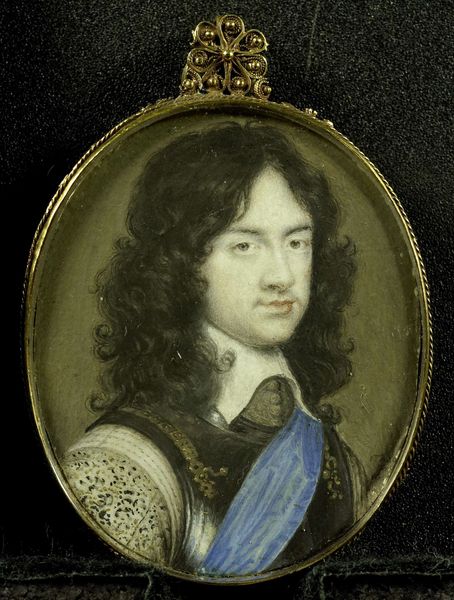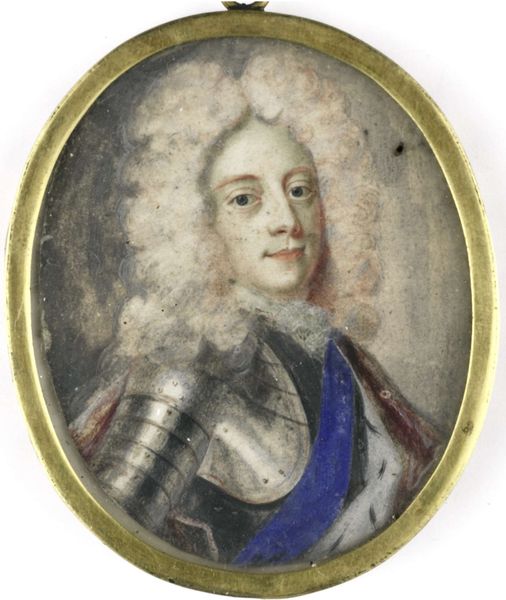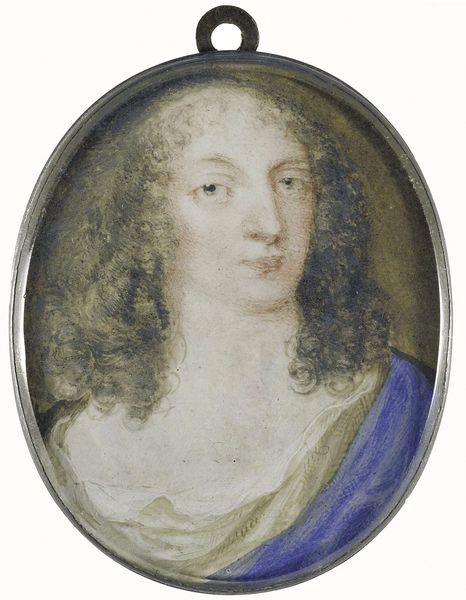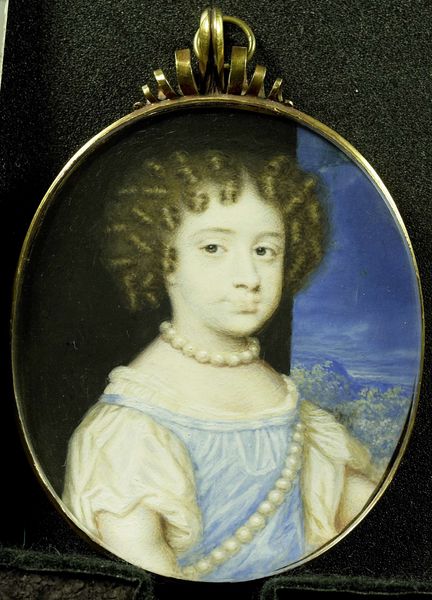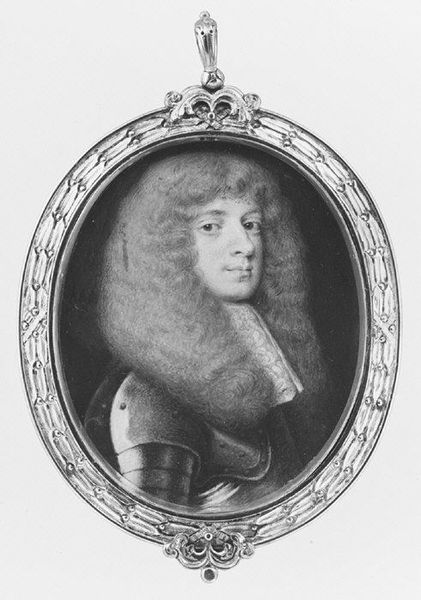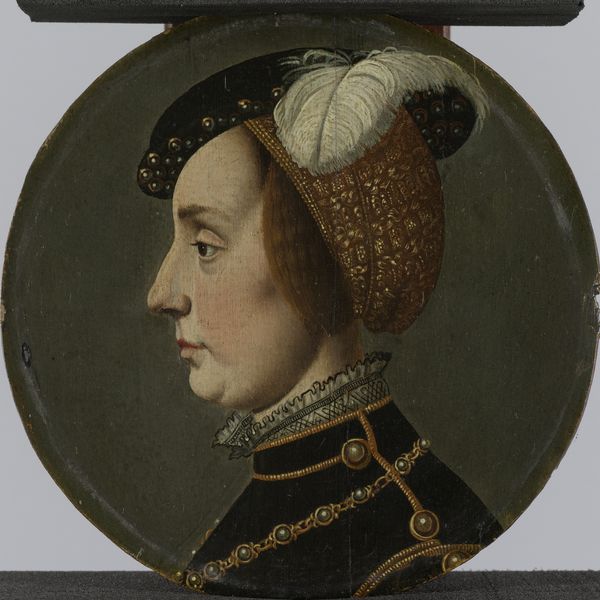
Portrait of Frances Teresa Stuart (1647-1702), Duchess of Richmond and Lennox, in Male Costume 1666
0:00
0:00
painting
#
portrait
#
baroque
#
painting
#
sculpture
#
history-painting
#
miniature
Dimensions: height 8.6 cm, width 7 cm, height 10 cm, width 7.2 cm, depth 0.8 cm
Copyright: Rijks Museum: Open Domain
Editor: Here we have Samuel Cooper's miniature, "Portrait of Frances Teresa Stuart, Duchess of Richmond and Lennox, in Male Costume" created around 1666. It's such a striking image. What captures my attention immediately is the blurring of gender lines; she seems so poised in this traditionally male attire. How do you interpret this work? Curator: Indeed! This portrait is fascinating when viewed through the lens of gender and power dynamics in the 17th century. The Duchess, a celebrated beauty of the court, is actively engaging with masculinity, adopting its visual markers to, perhaps, challenge the very rigid constructs of femininity placed upon her. How do you see that reflected in the gaze she offers? Editor: It's direct, almost challenging. Not what I'd expect from a formal portrait of the time. It’s certainly not demure. Curator: Exactly. And what does it mean when a woman, particularly one in such a visible position, chooses to represent herself in this way? Consider the performance inherent in both gender and portraiture itself. Cooper isn't just painting a likeness; he's constructing a statement. It invites questions about the subversive potential within these seemingly restrictive artistic forms. Could this be viewed as an early form of gender play, pushing boundaries in a patriarchal society? Editor: That's a perspective I hadn't fully considered. Seeing it as an active choice to subvert expectations... it adds so much depth. I was initially drawn to its aesthetic qualities, but understanding the historical and social context makes it truly compelling. Curator: Absolutely. This miniature serves as a reminder that art doesn’t exist in a vacuum. Engaging with historical and theoretical frameworks unlocks richer narratives and possibilities within these visual representations. The Duchess isn't simply wearing male attire, she's performing an identity, negotiating her own agency within a world that sought to define her. Editor: This has definitely changed how I’ll look at portraits moving forward! I'll be sure to consider the artist and subject's agency and what social constructs are either being reinforced or challenged. Curator: Precisely. And that’s how we keep the dialogue between the past and present alive!
Comments
No comments
Be the first to comment and join the conversation on the ultimate creative platform.
